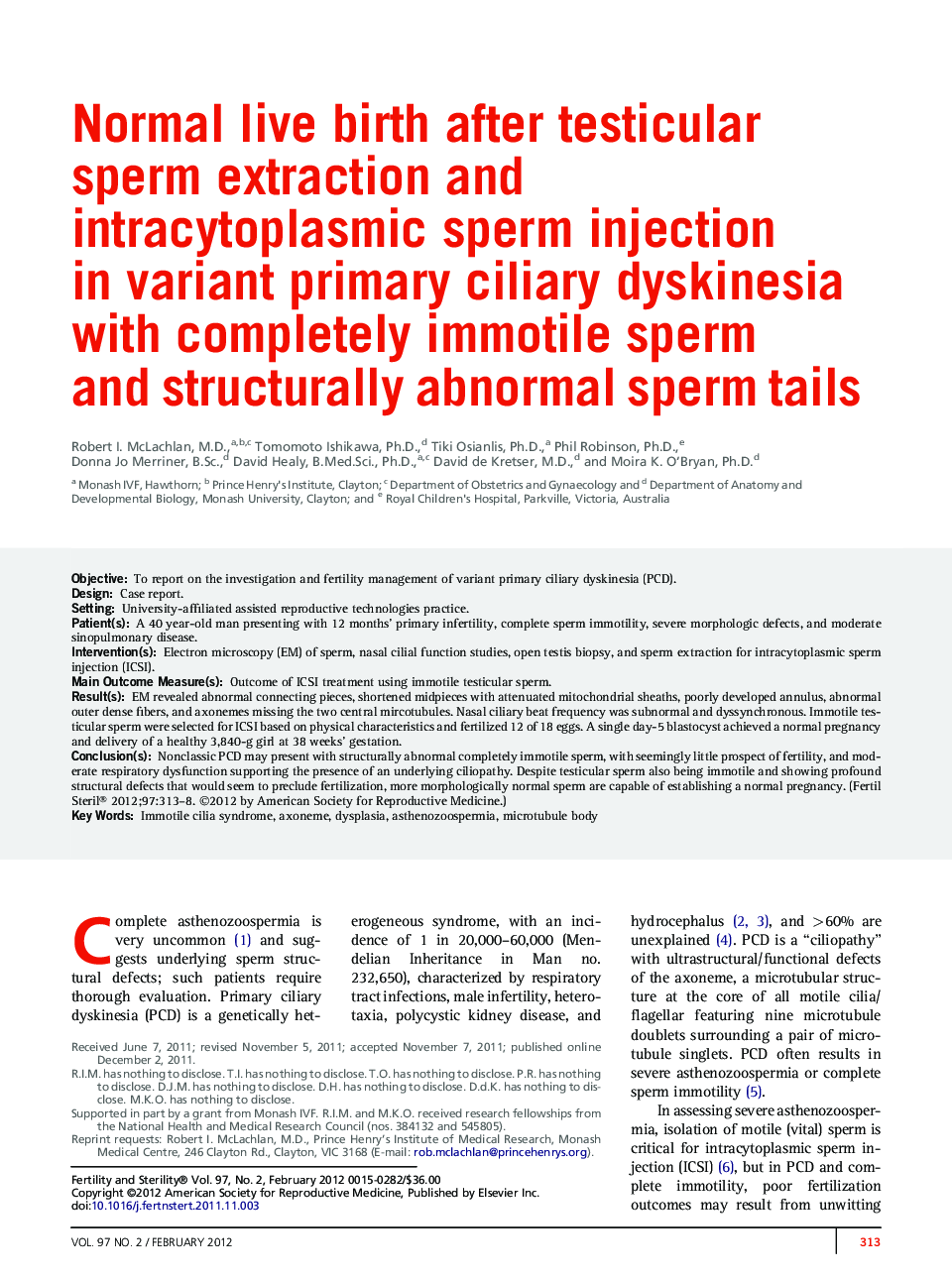| Article ID | Journal | Published Year | Pages | File Type |
|---|---|---|---|---|
| 3939140 | Fertility and Sterility | 2012 | 6 Pages |
ObjectiveTo report on the investigation and fertility management of variant primary ciliary dyskinesia (PCD).DesignCase report.SettingUniversity-affiliated assisted reproductive technologies practice.Patient(s)A 40 year-old man presenting with 12 months’ primary infertility, complete sperm immotility, severe morphologic defects, and moderate sinopulmonary disease.Intervention(s)Electron microscopy (EM) of sperm, nasal cilial function studies, open testis biopsy, and sperm extraction for intracytoplasmic sperm injection (ICSI).Main Outcome Measure(s)Outcome of ICSI treatment using immotile testicular sperm.Result(s)EM revealed abnormal connecting pieces, shortened midpieces with attenuated mitochondrial sheaths, poorly developed annulus, abnormal outer dense fibers, and axonemes missing the two central mircotubules. Nasal ciliary beat frequency was subnormal and dyssynchronous. Immotile testicular sperm were selected for ICSI based on physical characteristics and fertilized 12 of 18 eggs. A single day-5 blastocyst achieved a normal pregnancy and delivery of a healthy 3,840-g girl at 38 weeks’ gestation.Conclusion(s)Nonclassic PCD may present with structurally abnormal completely immotile sperm, with seemingly little prospect of fertility, and moderate respiratory dysfunction supporting the presence of an underlying ciliopathy. Despite testicular sperm also being immotile and showing profound structural defects that would seem to preclude fertilization, more morphologically normal sperm are capable of establishing a normal pregnancy.
